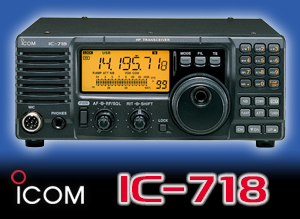Propagation News – 13 October 2024
What a difference a week makes when it comes to HF propagation!
This last week has been characterised by solar flares, coronal mass ejections (CMEs), and an elevated Kp index. Put together, this has resulted in dire conditions on HF, reminiscent of a solar minimum.
A visible aurora was seen from the UK once again after the Kp index hit 7.33 on 8 October.
Numerous CMEs have hit the Earth and the solar proton flux has risen, resulting in a moderate S2 radiation storm as particles blasted away from the flare site.
This means poor transpolar paths until the solar wind abates and the storm settles.
Maximum usable frequencies have been badly affected and struggled to get much past 14MHz over a 3,000km path on 8 October. Geomagnetic storms were also forecast for Thursday, the 10th, and Friday, the 11th.
That’s a shame as—before the CMEs hit—HF had been humming with a lot of DX on the 28MHz band and many five-watt beacons romping in from the USA.
Next week, NOAA predicts that the solar flux index may drop back into the 170s, but it’s anyone’s guess as to how geomagnetic conditions will pan out.
We have had three X-class solar flares over the past week and on Wednesday, the 9th, the probability of another X-class solar flare was estimated at 30 percent and an M-class event at 75 percent. So, it may be a case of ‘batten down the hatches’ on HF until the storm conditions pass.
This is not uncommon at this point in the solar cycle and unsettled conditions are likely to continue as we move along the downward portion towards the solar minimum.
HF and up propagation news from G3YLA and G4BAO
The current spell of unsettled weather is probably going to flip into high pressure mode a couple of times during the coming week. The first of these will be Sunday, the 13th, and through the first half of next week.
However, by Wednesday, the next change back to low pressure should be with us, closely followed by another attempt to build high pressure later in the week.
This offers something for everyone with prospects for rain scatter on the GHz bands and the possibility of tropo.
The prospects for meteor scatter are also good, with October offering a number of useful meteor showers.
While 50 and 70MHz are the best for the mode, look at 144.360MHz in MSK144 digimode. Or, if it’s a shower peak, 144.200MHz—the SSB meteor scatter calling channel—to see what’s around.
The solar conditions continue to behave like a solar maximum and, with several recent powerful flares and CMEs to stir things up, we should continue to check the bands for signs of aurora.
The recent RSGB CW 80m Autumn Series Contest on Monday, 7 October was about as auroral as it gets with strong flutter on signals and a challenging hour and a half for participants—so not just an effect for VHF.
The RSGB 1.3GHz UK Activity Contest coming up next week on Tuesday, the 15th, may be on the changeover from high pressure to low. Tropo might be limited to eastern areas for paths across the North Sea to northern Europe.
For EME operators, Moon declination is still negative but rising to positive by Tuesday night. Path losses are falling towards minimum at perigee on Thursday, the 17th.
So, we have increasing peak Moon elevations and longer Moon windows with the lowest loss for the coming week. 144MHz sky noise is low for the rest of the week.
Category: GB2RS Propagation News











